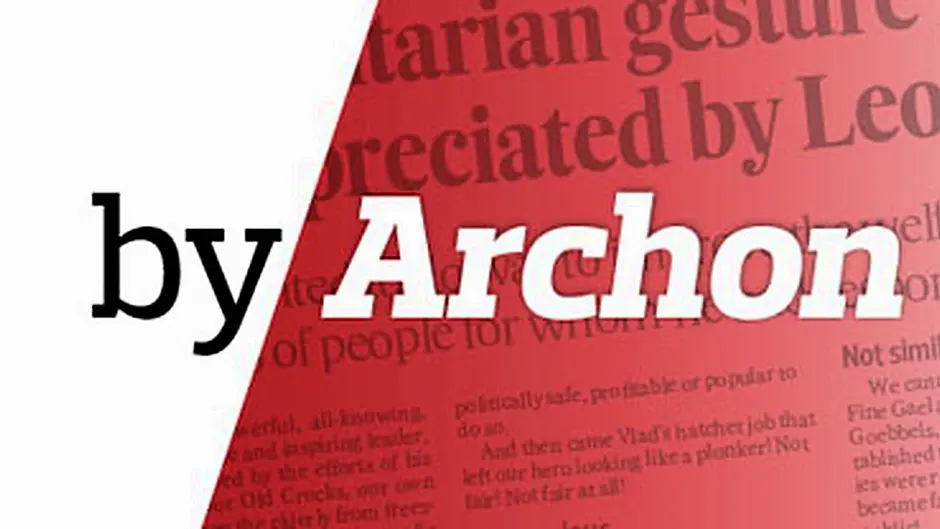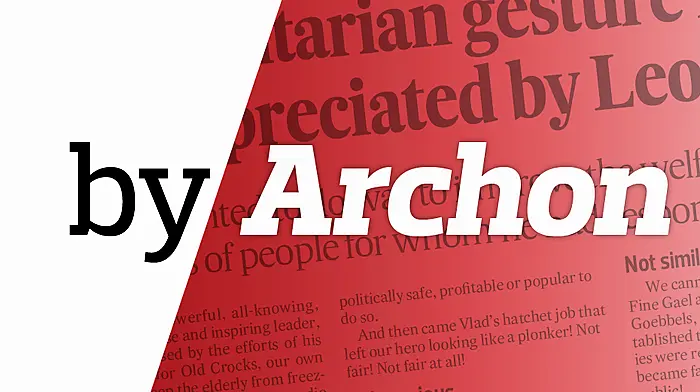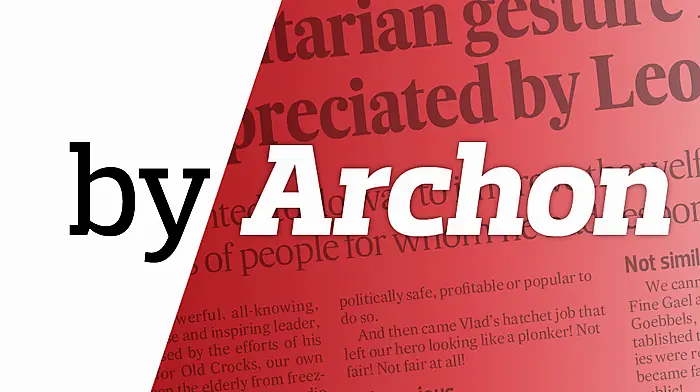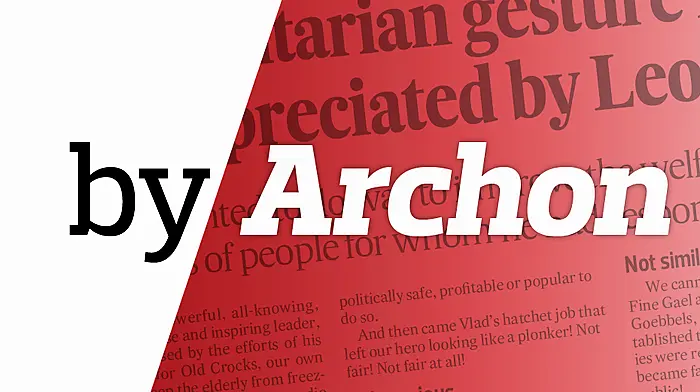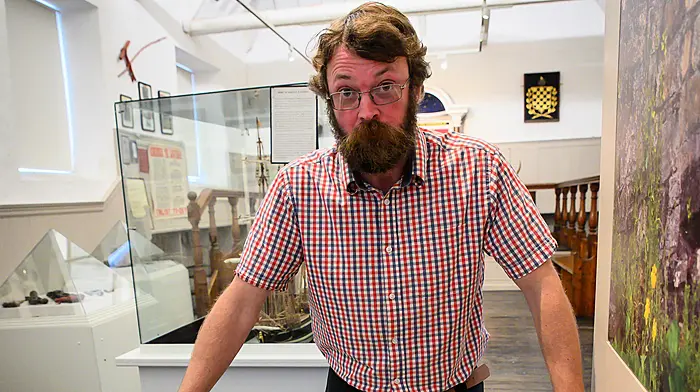RECENT media attention regarding the dreadful practice of human trafficking – which included forced labour and domestic slavery – should remind us that St Patrick, the patron saint of Ireland, began his working life as a slave. Happily, he had a dream as to how to escape and successfully fled the country, only to come back later as a premier proselytiser and outstanding saint.
In the process he drove all the snakes of Ireland into the sea, raised 33 people from the dead and, as everyone knows, introduced Christianity (Who, for instance hasn’t been profoundly impressed by his ‘Confessio’? A bestseller for the past 1,500 years!)
But, let’s face it, slavery is no joke. And now it has become a hot potato in the most diverse of places: Trinity College Dublin, Berkeley University in the United States and – of all places – the Church of Ireland cathedral of Cloyne in East Cork!
Here’s the background: George Berkeley (1685-1753), was an eminent philosopher who was appointed Bishop of Cloyne in 1734. He argued that familiar objects, such as tables and chairs, are only ideas in our minds and cannot exist without being perceived – an idea that makes perfect sense after the ingestion of at least six pints of Beamish, a good Cork stout.
In 1729 Berkeley headed for America, settling near Newport Rhode Island where he bought a plantation and several slaves to work the plantation. He also had plans for ‘an ideal city’ which he would develop in Bermuda, and to found a college for training missionaries.
His plan was to convert Native Americans by enrolling ‘savages’ under 10 years of age. The youngsters were to be ‘thoroughly imbued with Protestant principles and habits’ and ready to evangelise before being released to return to their own people.
Kidnap for Christ!
The future ‘missionaries’ were recruited by peaceful methods but, if that wasn’t possible, they were kidnapped, sent to a remote island and imbued with religious training. Oh yes, when it came to matters spiritual, our man from Cloyne (the birthplace of Christy Ring; no connection!) was somewhat forceful in the pursuit of his ecclesiastic objectives.
He also dabbled in the slave purchasing business and acquired ‘a Negro man named Philip, aged 14 years or thereabouts,’ and an Edward, ‘aged 20 years or thereabouts.’
Sadly his social experiment in creating an advanced religious society didn’t get off the ground (the British government refused to provide the funding – the cads!) and he returned to Ireland in 1732 where he was appointed Bishop of Cloyne, a post he held until his death in 1752.
But, before departing America, he baptised his slaves, explaining to the neighbours why Christianity supported slavery and why slaves would become better slaves by being Christian! A brilliant idea that truly marked him out as an outstanding Cork philosopher; or should that be ‘Cork chancer’?
No statue
In 1999 Yale University celebrated Berkeley’s great ‘missionary’ effort and, as well, his gift to the university of a slave-worked plantation – all of which helped finance a college that now bears his name, Berkeley! (Pass the sick-bucket).
On his return to Ireland, he established a school to teach spinning and he refined his idea that the world consisted of nothing but thoughts that existed in the mind as a result of mental awareness or understanding.
From the perspective of immortal fame, however, Berkeley never quite made it to the extent of having a statue erected in his honour, although his importance as a philosopher was never denied.
Nor was he perceived as a ‘slaver.’ His purchase of human beings took place discreetly although a fellow philosopher and Irishman, Francis Hutcheson, strongly condemned slavery (Hutcheson is sometimes described as the intellectual ancestor of the United Irishmen).
Cork connection
That aside, those in East Cork who know anything about Berkeley are proud to have had among them a philosopher of international distinction.
It reinforces the pleasant idea that most Leesiders have the makings of thinkers, theorists and lovers of wisdom.
Trinity College Dublin also claims him (they would, wouldn’t they?) and even named the College Library in his honour, as well as offering an annual ‘Berkeley Gold Medal’ to distinguished egg-heads.
University College Cork, we suspect, might have never heard of Berkeley!
So, it was right and proper that, during the recent riots, protests and statue-toppling the historical memory of the East Cork bishop remained unscathed – although, when one thinks on it, there was no effigy of him to tear down, which probably helped.
The result? Despite being a slave-owner, Berkeley’s reputation remained intact, safe from injury, bad press and violation.
And if he’s remembered at all, it’s because of his assertion that only minds and mental states exist which, strangely enough, as an idea has stood the test of time.
Nonetheless, Berkeley’s name has been engraved on the metaphysical pantheon of Leeside bounders for having integrated the horrors of slavery with religion! To which, we suppose, some Corkonian fools might cry: ‘Doubtcha Georgie, boy! You’ll always be one of us!’
Or, as they say politely in the Cork Arms whenever someone quotes Berkeley: Esse est Percibere (to be is to be perceived).
Oh, and his onetime cathedral in Cloyne is worth a visit, even though one can’t smother the thought that, perhaps, the Church of Ireland should be at the forefront in making amends for having harboured a supporter of slavery within its ranks – statue or no statue.
Bridge too far
And now for something different: Chairman of Cruise Ireland, Capt Michael McCarthy, is convinced that Cork will shoot itself in the foot if it builds a non-opening bridge across the city quays.
Although planned by the National Transport Authority as part of a Luas-style line that will connect Ballincollig and Mahon to the city centre, he claims the ‘fixed’ bridge project will seriously damage maritime tourism.
Cruise passengers, he argues, are opting for small passenger ships that can take them into the centre of a city but a fixed bridge in Cork’s case would put the kybosh on any such visits from ships, ferries, water taxis and naval vessels. Why?
‘Because the bridge which is to connect Horgan’s Quay with the Mill Road, beside Odlums’ old mill, will not be able to open,’ argues the Capt’n.
As reported in De Paper, he’s of the opinion that the following areas will be ‘sterilised’: Horgan’s Quay, Penrose Quay, North and South Custom House Quay, including the pontoons for visiting yachts and power boats, Albert Quay, the South Jetties and the Swinging Basin.
He reminded the Port of Cork that ‘our forefathers had the vision more than 150 years ago to ensure all those bridges lifted up to allow ships to come up the river.’
He has a point.

